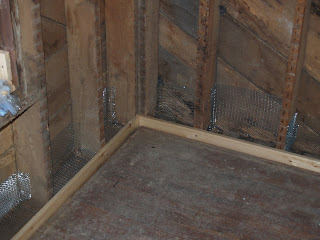Until yesterday it was thought the Nickellton school was named after the town of Nickellton. This theory does make sense. The school we are renovating was built in 190l, after the town of Nickellton was founded, and it was built a half-mile away from the perimeter of the town on the Loughery Property. There is only one problem with the preceding conclusion, the school was built on the Loughery Property.

Years before 1875 Missouri set a law requiring a school be located at the center of about every three to four square miles. This made it possible for children to walk a reasonable distance to school. According to the 1875 plat map of Jackson Township, the section of Macon County where Nickellton is located, Nickellton did not exist and neither did the Nickellton School. In 1875 there were three other schools within the Jackson Township. One school in 3 out of the 4 quadrants of Jackson Township. These schools were designated as School No. 2, School No.3, and School No. 4. Two of the three schools were named after the family who donated the land to build the school. School No.3, Moody School in the southwest corner of the township, formerly located at the corner of Hwy K and Hwy M, was named after the Moody Family. School No. 4, Stow School in the southeast corner of the township, formerly located in what is now a corn field directly across from Ontario Road, was named after the Stow Family. Many other schools in Macon County were named after the families who donated the property to build a school McNeely School, Glaston School, Steele School, Murry School and so on. School No. 2, Bear Creek School in the northwest corner of the township,was named after a geographical boundary of the school district, the Bear Creek. All the children who live on the west side of Bear Creek went to School No. 2 because the creek would flood frequently and the children didn't have a way to walk across the creek.

So what happened to school No.1? Why is there no school located in the the 1st quadrant of Jackson Township, the northeast corner? Interestingly, on the 1875 plat map of Jackson Township there are two dots on the Nickell property which is located in the northeast corner of the township. The two dots are in horizontal alignment and within a 100 yards from one another. Neither dot is designated with a word or symbol. Most dots meant residence unless another word or abbreviation was next to the dot. School No. 2 thru No. 4 is represented by a dot with a small square around it and the word school with a number. I have two theories for the reason School No. 1 is not shown on the map. Theory one, the recorder of deeds at the time made a mistake forgetting to place a square around one of the dots and left off the designation School No. 1. Theory two, School No.1 would have singly covered a much larger area than the other three schools. The children of this area may have been home schooled and the school location was already chosen by the settlers in 1875, but the school was not built yet.

I can't prove it yet, but I believe the original location of the school was not on the Loughery property, but on the Nickell property a half mile north of the Loughery property. This school building was originally School No. 1 Nickell School named after the Nickell family. One other reason for this conclusion is the number that is on the building in the picture, 1-53-13, the original school district number. 1 stands for School No.1, 53 is the Jackson township number, and 13 is the range in which the township was located. If my theory does pan out, the school has moved two times, from the Nickell property to the Loughery property and then to the Borron property. There was a new school built on the Loughery property in 1901. The original school on the Nickell property could have been destroyed by fire, like many schools of the time, or a natural disaster like a tornado. The Nickellton School located on the Loughery property did have a cellar located directly behind the school. By the time the new school was built on the Loughery property, the town of Nickellton existed. The Nickell family donated land to erect town buildings and a trading post, hence the name Nickellton. I believe instead of changing the name to the Loughery School it was decided by the school board of the time to name it the Nickellton School to keep the original Nickell family name, and to make Nickellton School easier to find.
I still cannot prove any of my theories as I need to look at the plat maps between 1875 and 1897. The Macon County courthouse will be seeing me again. No I haven't committed any crime, I have just been persistent in asking for information. If you know me, I will get the information I need if it is the last thing I do.
One last interesting find was in 1901 the Missouri Schools began redistricting to combine and make larger schools. Nickellton school had the largest enrollment in Jackson Township, it was the largest school building in the township (27'X35'), and the new school opened in 1901. 1901 is the last number on the school sign.



















